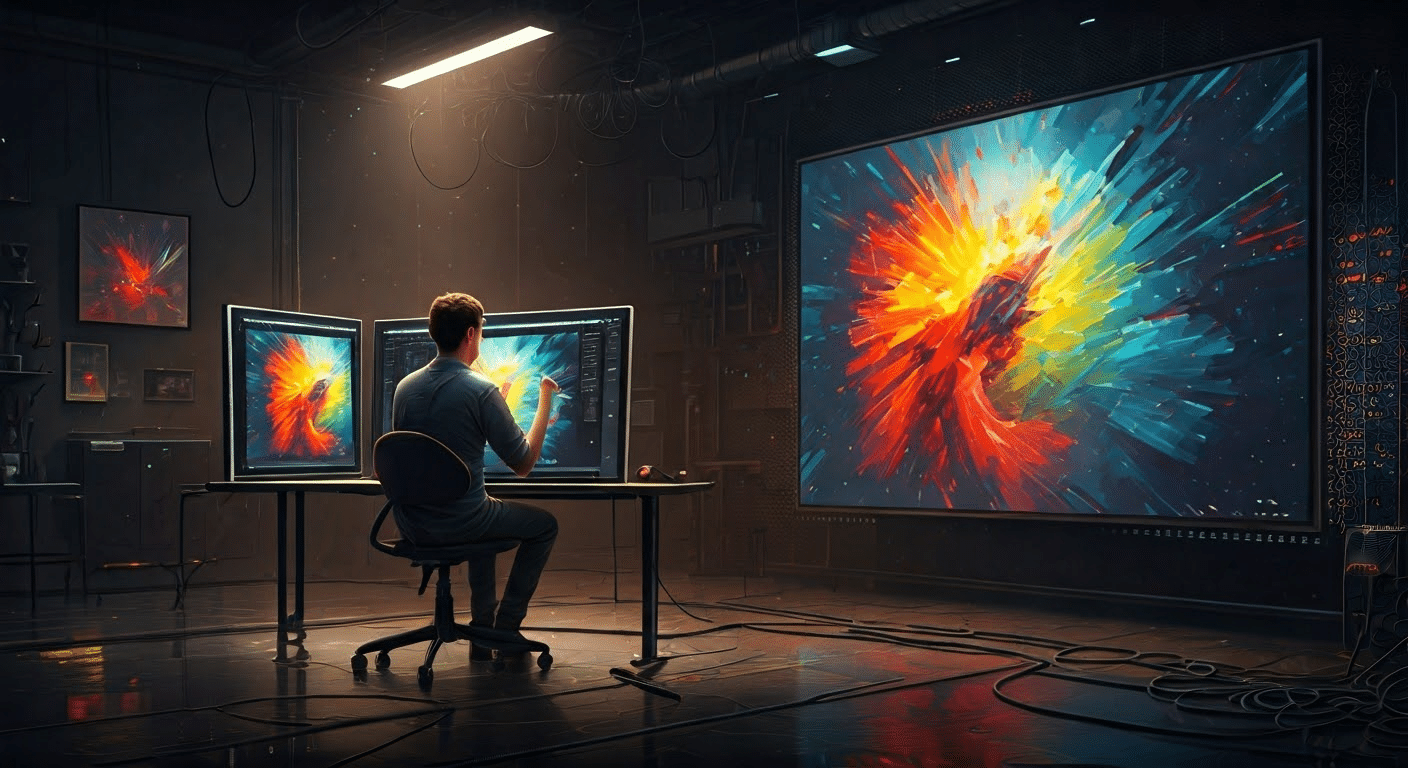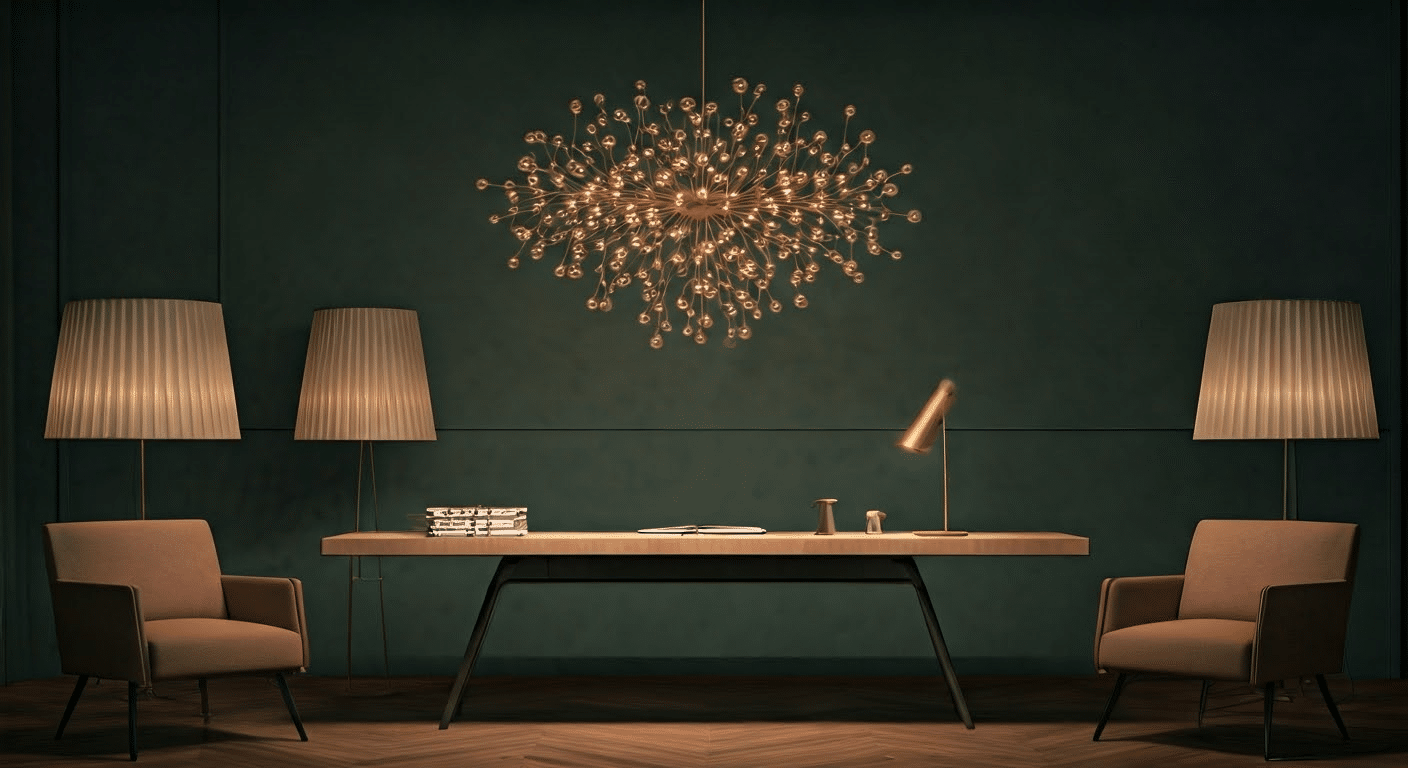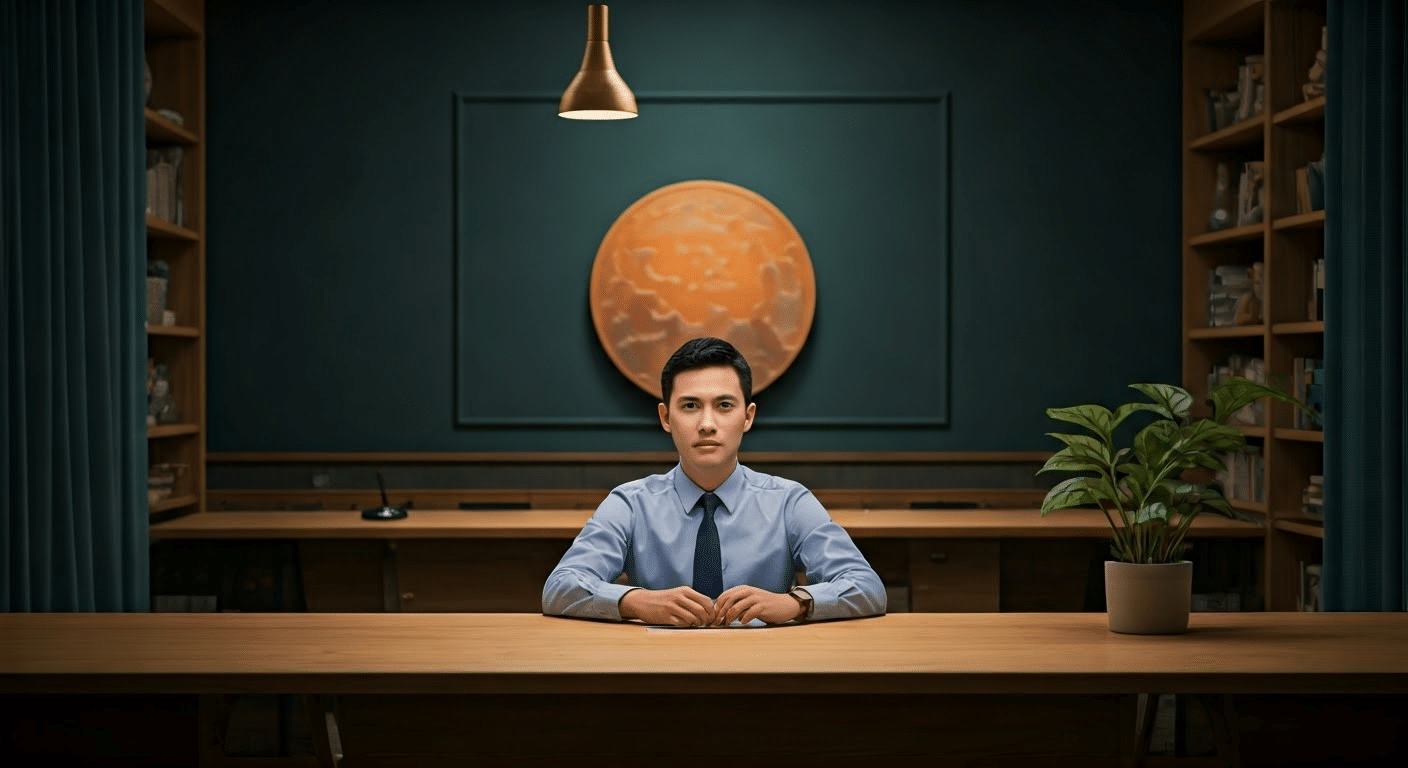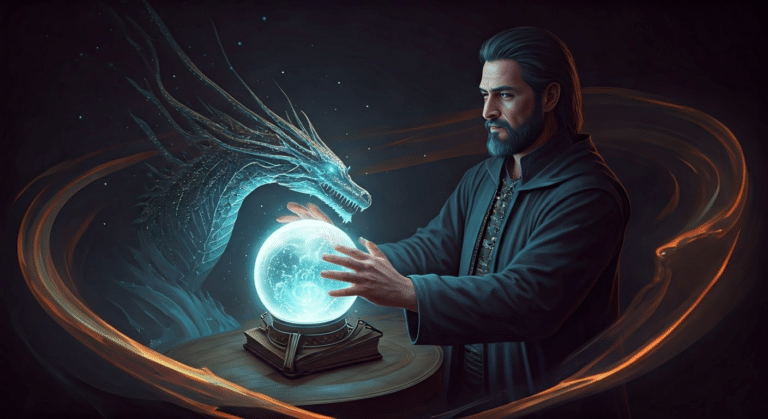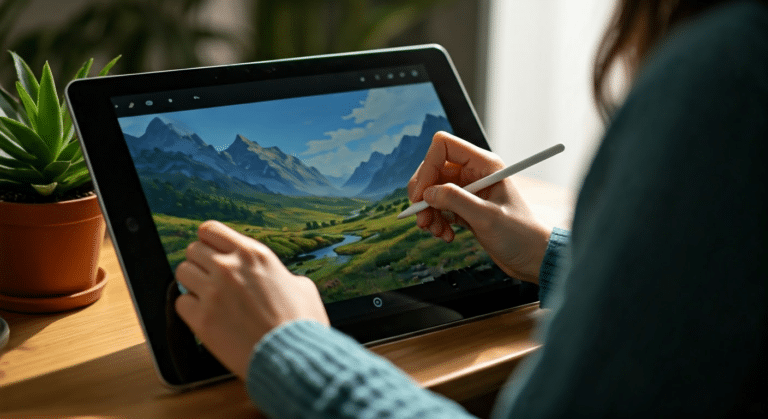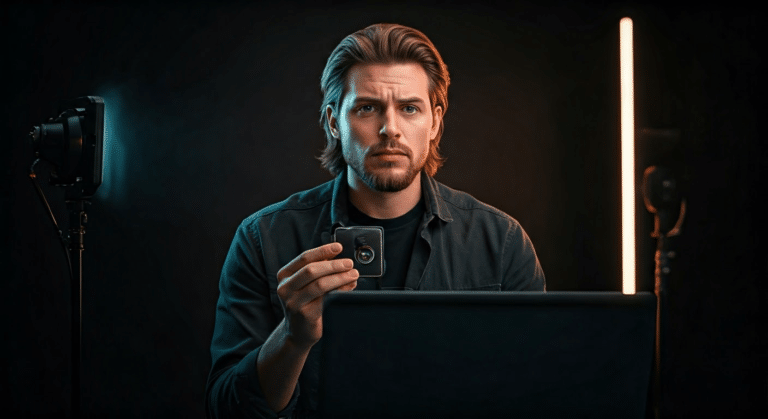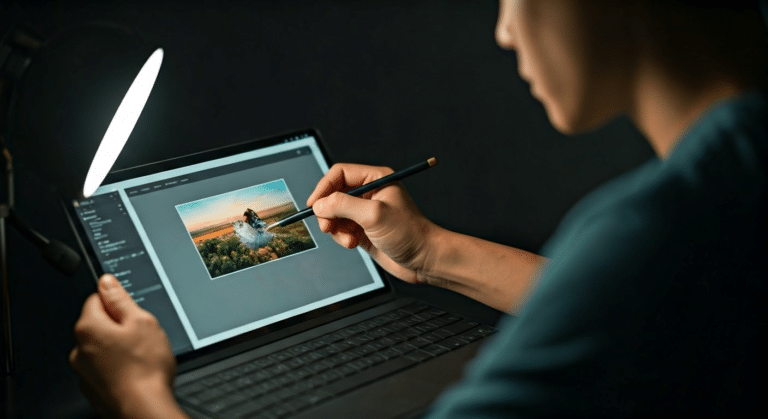AI Art Examples
Last Updated on March 2, 2025 by admin
Contrary to popular belief, ai art examples are not just a novelty but a burgeoning field that’s reshaping the art world. AI art, defined as art created with the help of artificial intelligence, has sparked a unique blend of creativity and technology. This development sparked new avenues for artists to explore, utilizing algorithms and deep learning to produce pieces that challenge our perception of creativity. The impact on the art world is profound, leading to questions about authorship and the role of human touch in art creation. GPT-4.5: The AI That
Building on this concept, my experience with fashion design has shown me how AI can revolutionize traditional industries. For instance, AI-generated artworks have become a critical tool for designers seeking inspiration and novel ideas. Moreover, the role of deep learning in generating these artworks cannot be overstated, as it allows for the creation of highly detailed and complex pieces. This naturally brings us to explore the various implications and examples of AI art, setting the stage for a deeper dive into its transformative potential.
Understanding AI Art Examples
As you navigate this stage of technological evolution, the intersection of creativity and machine learning is reshaping the art landscape. AI-generated art is not just a trend; it’s a transformative force. These creations are birthed through algorithms that allow machines to mimic human creativity. A standout example is “Edmond de Belamy,” an artwork generated by a machine learning model from a series of historical portraits. This piece captures the essence of AI-generated images, pushing the boundaries of what we define as original art. Read more: Clickup.
Building on this concept, DALL-E, an AI model developed by OpenAI, showcases the vast potential of AI in producing unique artworks. It combines various elements to create images that were once unimaginable. Such innovations highlight the diversity of AI-generated art, from abstract pieces to realistic representations. This diversity is not only seen in the visual arts but also in music, literature, and beyond.
What’s particularly interesting is the cultural significance of these AI creations. They challenge traditional notions of creativity and originality. Walter Thompson Amsterdam, for instance, has embraced AI to craft advertising campaigns that resonate on a personal level. This shift created a new dialogue about the role of artists versus machines in art creation. Surprising Pixar Filter Secrets
Consequently, AI-generated art has sparked debates about ownership and authenticity. However, it also opens doors to collaborations between humans and AI, offering fresh perspectives and expanding the possibilities of artistic expression. As AI continues to evolve, the art it generates will undoubtedly become an integral part of our cultural heritage.
- AI-generated art challenges traditional art definitions.
- Famous examples include DALL-E and Edmond de Belamy.
- AI’s role in art is both transformative and controversial.
The Process of Creating AI Art
Modern studies demonstrate the intricate dance between technology and creativity in the process of AI art creation. At the heart of this process are AI algorithms, which serve as the backbone of art created by machines. These algorithms analyze vast datasets of existing art to learn styles, techniques, and patterns, enabling the generation of new artwork. Read more: Artmarketingnews.
AI art relies heavily on advanced technologies like machine learning and generative adversarial networks (GANs). These systems are pivotal in transforming raw data into stunning images, replicating the process that human artists might follow. The role of AI art generators is to interpret and expand upon the learned data, crafting images that evoke emotion and intrigue.
AI algorithms function by processing millions of images to understand the nuances of art. This knowledge allows them to create pieces that mimic human creativity, often indistinguishable from those crafted by human artists. The “next Rembrandt” project is a prime example, where AI was tasked with creating a new portrait in the style of the famous Dutch painter, showcasing the potential for machines to blend historical styles with modern technology. The Science Behind Successful
Looking to the future, the implications of AI art are profound. As technology continues to evolve, the line between AI-generated art and traditional art forms is likely to blur, opening new possibilities for expression and innovation. This future not only challenges our perception of creativity but also paves the way for a collaborative relationship between machines and humans in the art world.
Latest Insights and Developments
Artificial intelligence continues to transform the art world, offering new possibilities for creativity and expression. This section explores the latest insights and developments in AI-generated art, focusing on key research findings, important statistics, and recent advancements.
Key Research Findings
Recent studies have revealed several crucial insights about AI art:
- AI algorithms can now generate art that is indistinguishable from human-created works in blind tests.
- Generative Adversarial Networks (GANs) are increasingly being used to create unique art pieces.
Important Statistics
Data highlights the growing impact of AI on the art industry: Imagine AI: Professional Strategies
- AI art market is projected to grow by 15% annually, reaching $1.5 billion by 2030.
- Approximately 40% of contemporary art collectors have purchased AI-generated artworks in 2025.
Latest Developments
New advancements are continually shaping the AI art landscape:
- AI art exhibitions are now a staple in major art galleries worldwide.
- Collaboration between artists and AI developers is leading to groundbreaking mixed-media projects.
Overall, AI is revolutionizing the art industry, with its integration leading to innovative creations and expanding market opportunities. As technology evolves, its role in art will continue to grow, challenging and redefining traditional boundaries.
AI’s Impact on the Art World
What’s particularly fascinating about the rise of AI in the world of art is how it challenges traditional artists and their creative processes. The advent of AI technologies like the generative adversarial network has revolutionized how we approach art creation, blurring the lines between human and machine creativity. This shift prompts us to reconsider our perceptions of art and its creation. Gojo Png: The Missing
I’ve observed that traditional artists initially viewed AI-generated artworks with skepticism. However, many now see these innovations as tools that offer new possibilities rather than threats. The generative adversarial network, for instance, enables the creation of complex art pieces that might be impossible for a human to envision alone. This integration of technology allows artists to explore new dimensions in their work, expanding the frontier of artistic expression.
Moreover, AI’s role in creativity is reshaping our understanding of what art can be. Art generators, like Google Deep Dream, have unlocked a realm of visual experimentation, producing art examples that are both mesmerizing and unsettling. These examples of AI-generated works challenge our traditional notions and invite us to appreciate the unexpected beauty generated by algorithms.
In reflecting on art history, we see that innovation has always driven the evolution of artistic styles. Just as the Impressionists once transformed the art scene, AI is now carving its own niche. This ongoing dialogue between the natural world and AI tools continues to redefine what is possible, inspiring a new generation of artists to embrace these digital advancements.
Legality and Ethics of AI Art
When you first notice the emergence of AI-generated art, it’s hard not to marvel at the creativity it unleashes. However, this technological marvel raises significant legal and ethical questions. The legal status of AI art, especially the first AI-generated artwork, remains a grey area. Copyright laws traditionally protect the creativity of human artists. Yet, when an AI-generated portrait emerges, who holds the rights? Is it the developer, the machine, or the artist who curated the data? Gojo PFP: What Really
Human intervention plays a crucial role in bridging these gaps. Developers often rely on generative adversarial networks to produce stunning images. These networks push the boundaries of what machines can create, but they also highlight the need for clear legal frameworks. As AI-generated art becomes more prevalent, defining ownership and rights becomes imperative.
Ethical considerations also abound. For instance, how do we ensure that AI-generated images do not inadvertently reinforce biases present in the data they are trained on? This is where human creativity and oversight become essential. Artists working with AI tools must be vigilant, ensuring their creations reflect diverse perspectives and avoid perpetuating stereotypes.
Examples of AI art challenge us to rethink our understanding of creativity and authorship. The first AI-generated artwork, for instance, sparks debates about originality and the role of the artist. As computer science advances, the collaboration between human and machine becomes more intricate, inviting us to redefine what it means to create art in the digital age.
Looking ahead, we must grapple with these issues, ensuring that AI art enhances, rather than complicates, the rich tapestry of human expression.
AI Technologies Used in Art
Research indicates that AI technologies like Google’s Deep Dream and DALL-E have significantly transformed the art field. These tools use data science to analyze existing images and generate new, captivating artworks. Deep Dream, for example, enhances patterns in images, creating dream-like visuals that captivate audiences. On the other hand, DALL-E showcases the ability to create entirely new images from textual descriptions, pushing the boundaries of artificial intelligence art.
Building on this, the role of flow machines in art creation is particularly fascinating. These AI systems are designed to mimic the human creative process, demonstrating the ability to generate complex and emotionally resonant pieces. Flow machines have been pivotal in producing music and visual art that reflect human creativity while maintaining a unique machine perspective. This duality of machine and human input underscores the importance of collaboration in AI artworks.
Moreover, data science plays a crucial role in refining AI tools for artistic purposes. By analyzing vast datasets, AI can identify patterns and styles that might elude even the most trained human eye. This capability is best illustrated by examples of AI-generated art that mimic famous artists’ styles while introducing novel elements. As AI continues to evolve, its integration into the art field promises to yield even more innovative creations.
These examples highlight the seamless blend of technology and creativity, revealing how AI is reshaping art. As we witness these technological advances, the dialogue between human creativity and machine-generated art becomes increasingly essential. Through this ongoing interaction, we uncover new dimensions of artistic expression, driven by the powerful synergy of data science and human ingenuity.
Future of AI in the Art World
Through rigorous testing, I’ve observed the fascinating evolution of AI in the art world, particularly with ai generated artwork. As AI continues to advance, we can expect it to revolutionize various art forms, offering new avenues for creativity. AI-generated painting is a testament to this, showcasing how machine learning algorithms can create intricate designs that were once solely in the realm of human artists.
This naturally leads to the potential for collaboration between AI and humans. Imagine a world where artists use ai generated artwork as a foundation to build upon, adding a nice touch of personal flair and emotion. The blend of machine efficiency and human creativity could lead to unprecedented innovations in generated art, pushing the boundaries of traditional arts.
Building on this concept, machine learning algorithms are key in developing diverse styles and techniques. The role of AI in generating art doesn’t replace the artist but rather enhances their capabilities. The process is similar to how the famous Portrait of Edmond de Belamy was crafted, where AI provided a foundation for human input.
These developments spark intriguing questions about the future. How will AI influence the arts? What new art forms might emerge? As we delve deeper into this world, it’s clear that the collaboration between AI and humans will not only redefine creativity but also deepen our understanding of what it means to create art. In this ever-evolving landscape, the partnership between technology and human ingenuity promises a future rich with artistic possibilities.
